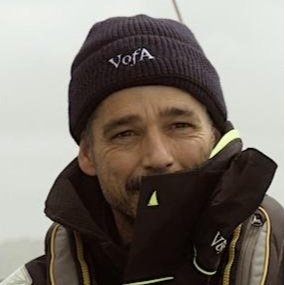Casa de Botes and the Bristish Imperial Expedition
Darkness gradually arrives at Antarctica by the end of Summer. That evening dusk was nearly at midnight. Three words in our minds: Water, boat, point. The chart marked –and Skip described to us– a minor shallow anchorage where in calm winds we might find shelter. We were slaloming fast among the ice. Every second counted. Silence was solemn, we were wordlessly rushing. Probably we were all wondering if the anchorage was going to be in good enough ice conditions to spend the night there. Otherwise, in the dark, what should we do next? We were also amazed by the superb scenery, completely enchanted by the enigmatic and blackening light.
The gods were on our side. In the tiny cove we found some sort of spot to anchor and a big piece of ice aground where we could lasso a line to keep the boat safe during the night. Almost everyone went to bed, and while we were eating chocolate and enjoying a bottle of Chilean Pinot noir, Skip left a book open on the empty saloon table: Tomorrow morning, anyone with a certain interest in local history should read this.
The book explained that in 1920 three men planned to come to the Antarctic Peninsula to attempt the first polar flight, they called themselves the British Imperial Expedition. Their remarkable plan was to take twelve aircrafts to Graham Land, and from there make the first flight over the South Pole. John Cope, who had been the surgeon on Shackleton’s 14-17 expedition, was the leader. The other members were to be Hubert Wilkins, a pioneer of aviation from Australia; Thomas Bagshawe, geologist; and Maxime Lester, surveyor.
They didn’t succeed in raising the funds, and at the end the expedition was canceled. But Cope thought they still could do useful work by extending a survey carried out in 1901-03, and he eventually persuaded the rest of the expedition members to join him at Deception Island By Christmas Eve. They reached the island separately, and started their trip along the western side of Graham Land on Norwegian whaling ships. After attempting different sites, they ended up landing in the small cave where we were anchored with the Vinson of Antarctica. They called it Waterboat Point after a ruined water boat which had been beached there eight years earlier by a Norwegian factory ship. The boat was nine meters long and had only a meter of headroom, which made live tough, so they built their tiny hut alongside the boat and constructed a new “salon” on the deck above the sleeping quarters.
Already in February, after making a few journeys around the area, John Cope realized the surveys he wanted to attempt could not be carried on from that place. He decided to postpone the expedition. They would come back the following year, with their own ship, and start from a more suitable spot.
But Lester and Bagshawe, to the surprise of the others, said that they would stay. They had come to carry out scientific observations, and that was what they intended to do. Cope and Wilkins managed to leave in a whaling ship, but the other two were left at the Waterboat Point, with the promise of being picked up a year later. Although they lived in very miserable conditions -everything froze, their clothes were in tatters and they ate mince seal almost every day- they held a scientific program that would have daunted many Antarctic veterans. They collected numerous data. They erected a pole to measure the tides. After the penguins were back they also kept a log about the eggs and their chicks development.
A year and a day after Bagshawe and Lester were left at the Waterboat Point, the whale catcher returned to pick them up. That was the end of what could be the smallest but one of the most passionate and sincerest research expeditions of the golden exploration era.
A lot has changed regarding safety and comfort in the polar regions since the 1920’s, but during a few months a year you will still find a small party of men, isolated in this lonely place. They are attending the Chilean base “González Videla - Bahía Paraíso”. Now, where the abandoned water boat which gave name to this place was, there is a “Casa de botes”. This nice Chilean expression refers to a modest boat’s storage cabin.
That night wind kept calm and not too much ice troubled us in the anchorage. But early in the morning, just fifteen minutes before our date with the Waterboat Point present dwellers, a big berg with an underwater tongue trying to reach our rudders made us leave abruptly. We rounded the cape and calmly steamed into Paradise Bay. As we sailed I observed the mountain range over the huts, the turquoise shades under the ice, the penguins living nearby the lifeboats ready to be plunged at sea. It’s good to see that time hasn’t changed the meaning and the function of the site’s name. I supposed that “Casa de botes'' couldn't be in a more accurate place.
Kenneth Perdigón
Skipper










